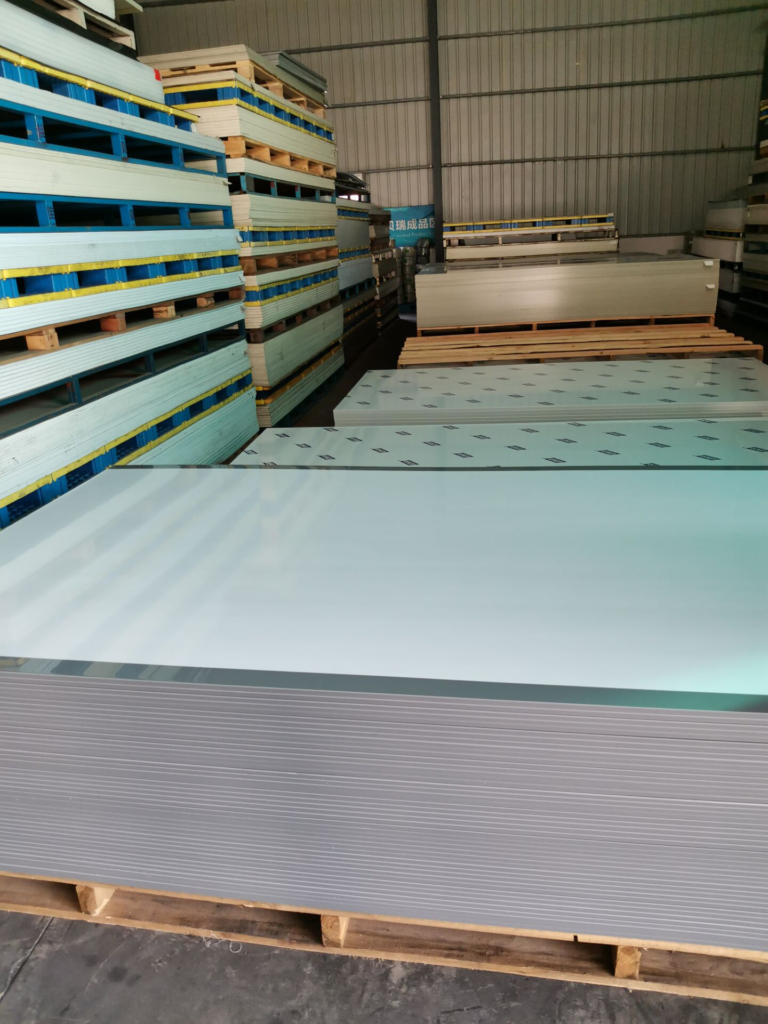Polypropylene (PP) sheets are a new generation of plastic board materials recognized for their eco-friendly nature. These sheets are non-toxic, odorless, and manufactured using green production techniques. Compared to other sheets with similar performance, PP-Platten are not only more affordable but also offer superior quality, making them highly popular across various industries.

This article explores the key features of polypropylene sheets, their processing grades, thermal and mechanical properties, chemical stability, and tips for choosing high-quality PP sheets.
1. Diverse Processing Grades for Multiple Applications
Polypropylene can be processed using various techniques such as:
- Injection molding
- Extrusion
- Thermoformen
- Rotational molding
- Foaming
Each processing method requires different melt characteristics, resulting in specialized grades like:
- Injection Grade PP
- Extrusion Grade PP
- Fiber Grade PP
- Rotomolding Grade PP
PP sheets produced through extrusion are lightweight, uniform in thickness, have a smooth surface, and offer excellent heat resistance, mechanical strength, chemical stability, and electrical insulation. Importantly, they are non-toxic and safe for industrial and consumer use.
2. Outstanding Mechanical Properties
Polypropylene is known for its high crystallinity and regular molecular structure, contributing to:
- High tensile strength and hardness
- Superior elasticity compared to high-density polyethylene (HDPE)
- Exceptional fatigue resistance, especially to repeated bending (up to 70 million cycles without damage)
- Dry friction coefficient similar to nylon, though its lubricated performance is slightly lower than that of nylon
These properties make PP sheets highly durable and suitable for high-stress environments.
3. Thermal Performance
Polypropylene exhibits good thermal behavior:
- Melting point: 164–170°C
- Sterilization resistance: Can be sterilized at temperatures over 100°C
- Dimensional stability: Maintains shape at up to 150°C without deformation
- Brittle point: -35°C; becomes brittle below this temperature
⚠️ PP has slightly lower heat resistance than PE (polyethylene) in extremely cold environments.
4. Chemical Stability & Corrosion Resistance
One of the most valued features of PP sheets is their chemical stability. Polypropylene resists most chemical reagents, with the exception of concentrated sulfuric and nitric acids. Its resistance improves with increasing crystallinity. However, it can be softened or swelled by low-molecular-weight aliphatic and aromatic hydrocarbons.
Applications include:
- Chemical pipelines
- Corrosive fluid containers
- Industrial equipment lining
These advantages make PP sheets a reliable choice for corrosive environments and chemical engineering applications.
5. Guidelines for Purchasing High-Quality PP Sheets
When buying PP sheets, especially for industrial or construction use, keep these tips in mind:
- Prioritize quality over price: Avoid being misled by overly cheap offers that compromise durability or consistency.
- Source from professional manufacturers: Choose a reputable company with proven experience and certifications.
- On-site inspection is recommended: Visit the factory if possible to examine scale, equipment, and product samples firsthand.
- Check certifications and production capacity: These factors reflect a manufacturer's ability to deliver consistently high standards.

At Zhihong Plastic Sheet Manufacturer, we welcome you to visit our facilities for an in-person evaluation. We are committed to delivering premium-grade PP sheets for a wide range of industrial applications.
Abschluss
Polypropylene (PP) sheets combine affordability with excellent physical and chemical properties. They are easy to process, durable, and environmentally safe. Whether you’re using them in chemical plants, food-grade applications, or construction projects, PP sheets are a high-performance, cost-effective material worth considering.

